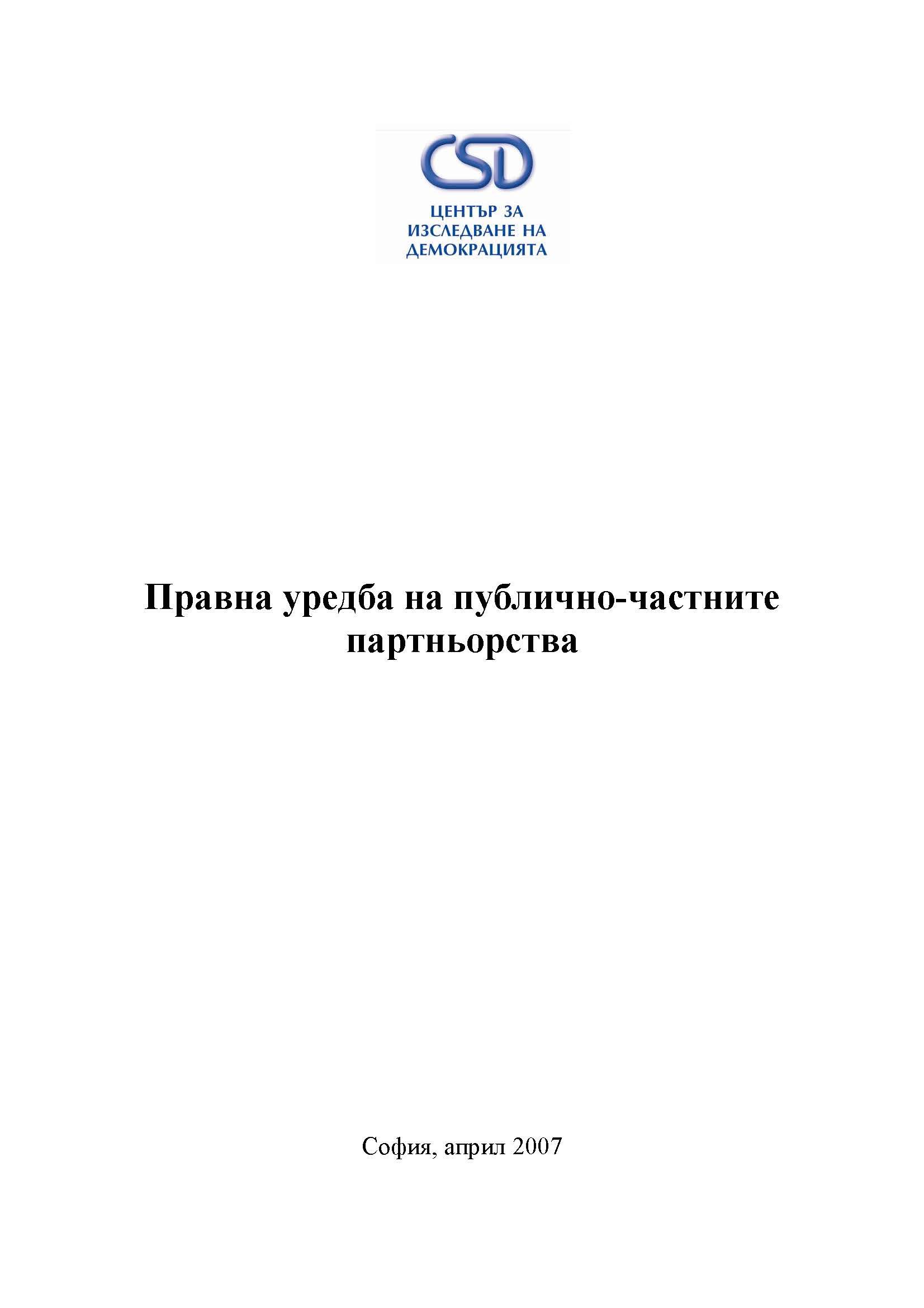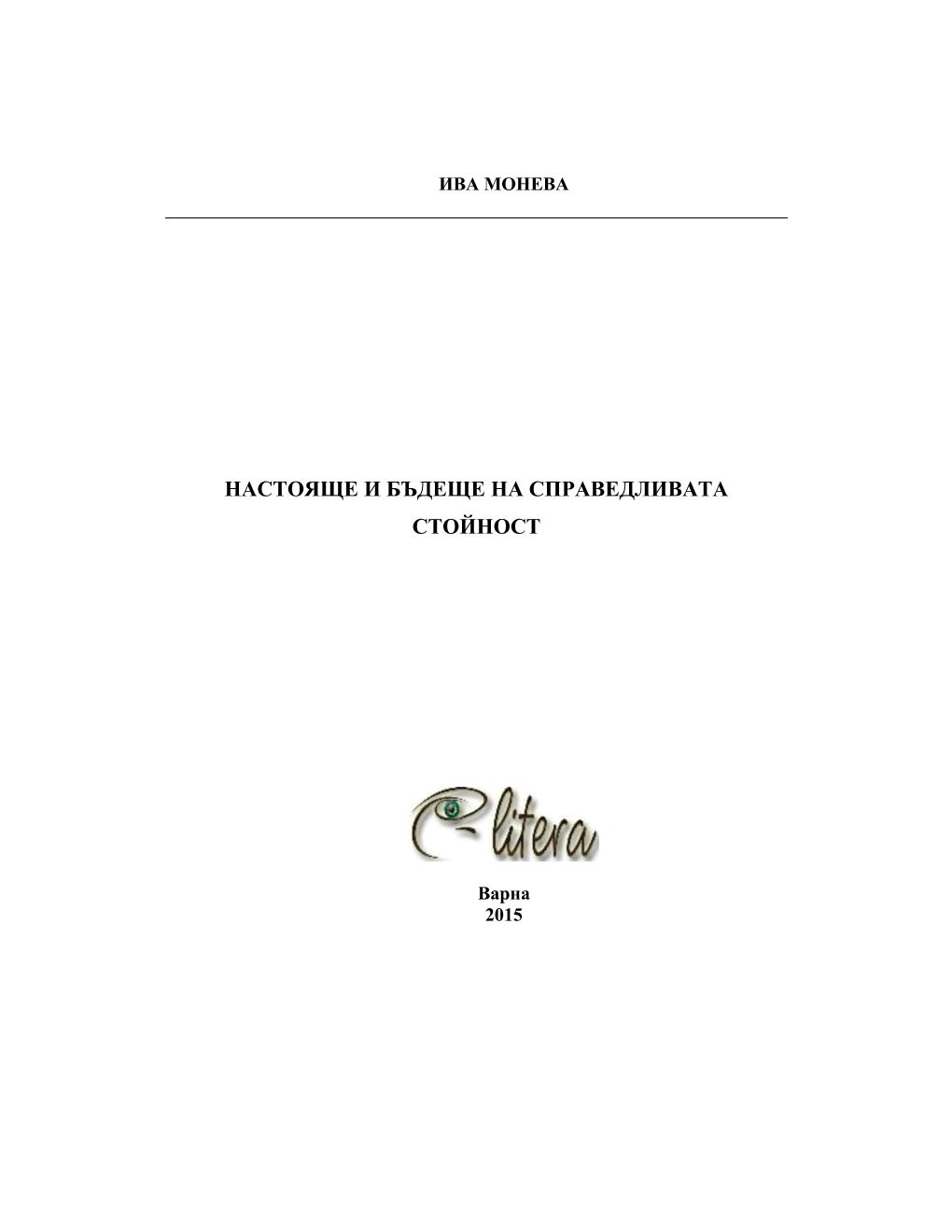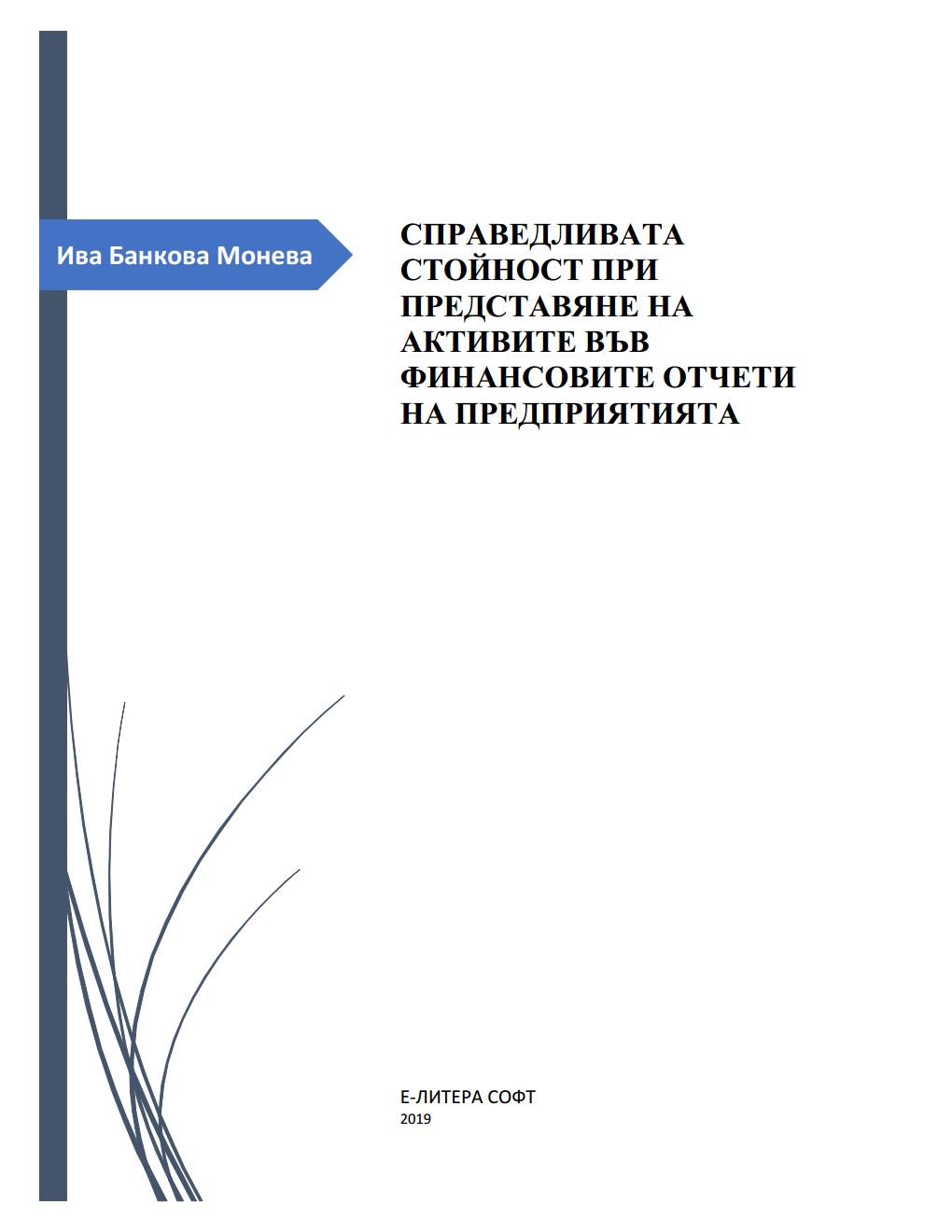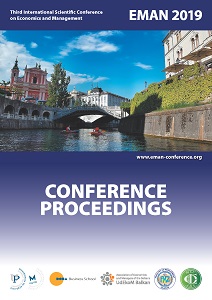
We kindly inform you that, as long as the subject affiliation of our 300.000+ articles is in progress, you might get unsufficient or no results on your third level or second level search. In this case, please broaden your search criteria.


This background paper provides legal overview of the regulatory arrangement and the practical implementation of public-private partnerships (PPPs) in 11 countries: USA, Canada, United Kingdom, Austria, the Czech Republic, France, Germany, Greece, Ireland, Italy and Poland as well as relevant European Union legislation. The profiles of the different countries allow comparison between the regulation of PPPs in them along four lines: (1) overview; (2) definition of PPPs; (3) types of PPPs; (4) application. The background paper summarizes the main PPP regulation types and juxtaposes them with the existing Bulgarian legislation. The paper concludes that the Bulgarian legislation currently does not cover any PPP relations outside classic forms such as public procurement and concessions and there is no specific mention of PPPs in the Bulgarian laws and regulations.
More...
The book offers an overview of the development of e-signature legislation in various countries and contains foreign and international acts related to e-commerce, including the legislation of the Czech Republic, Germany, the UK, the US (state of Utah), Spain and other countries, international law as well as the Bulgarian Draft Law on Electronic Document and Electronic Signature developed by CSD Law Program experts.
More...
The monograph presents theoretical and methodological principles and practical provisions for improving the organizational and economic mechanism of competitiveness regulation of graduates of higher educational institutions of Ukraine. The essence of competitiveness of graduates of higher educational institutions in modern conditions is considered, the main directions, methods and levers of its regulation are systematized. The effectiveness of regulation of the competitiveness of graduates in the context of compliance with qualitative and quantitative needs of the labor market is analyzed. The strategic directions of improvement of the process of regulation of competitiveness of graduates of higher educational institutions, the method of an integrated assessment of the level of competitiveness of graduates of higher educational institutions in the labor market are proposed.
More...
Before the onset of the global financial crisis, the role of risk management in banks was greatly underestimated. The most serious problems in this respect create the ignoring of a number of aspects that form the content of the risk culture. For years, pursuing profits at all costs, the bank top management ignored the importance of multiple critical success factors: values of the risk philosophy and risk management; attitudes and motivation of employees; need for rich information provision within the entire banking group. Quite logically, in the uncertain, complex and ever-changing environment, the subject matter of a "risk culture revolution" stands in the spotlights. It is clear that bank management should focus on many soft aspects of risk management - moral values of management, motivation and training of staff, the relationship "risk management - reputation", the desire of the management and employees for an open dialogue on risks. The focus of this book is on the risk culture of banks in Bulgaria. The results of a questionnaire survey that covers 9 banks holding 66.21% of all assets in the Bulgarian banking system at the end of 2016 are presented. It includes 304 respondents from three levels - senior management, risk authorities and other departments. After highlighting the most significant problems on the different bank risk culture factors, measures are proposed for its improvement in three directions: performing structural and process optimization of risk management; increasing the efficiency of the work of risk authorities; encouraging the involvement of banking staff in risk issues.
More...
Based mainly on the requirements of International Accounting Standards (IAS), International Standards on Auditing (ISAs) and International Valuation Standards (IVS), the practical and theoretical researches, the comments, the analyzes of the financial statements has been attempted to examine and analyze the position of the fair value measurement and to identify the problems before it. The main purpose of the research is to examine the essence, place, meaning, and regulation in the accounting - legal and professional - valuation aspects of the fair value measurement. In other words, the complex, but especially topical, issues of fair value are discussed.
More...
The book is oriented to the specific aspects of the fundamental and theoretical issues, current legislation, issues and empirical research on the use of the fair value of the assets in the financial statements of the enterprises through the focus of the International Accounting Standards (IAS). The current trends in the use of fair value based on a retrospective analysis were outlined. The possibilities of the use of the fair value measurement of the assets in the financial statements of the enterprises were explored. The empirical research of the actual condition of the use of the fair value of the assets in the financial statements of the index BG 40 of the Bulgarian Stock Exchange, with the exception of credit institutions, emissions as of 19.03.2012, were carried out.
More...
In the framework of demographic changes and active care in the workplace, the management of the elderly is becoming an increasingly important area of human resources management. The care of the workforce is crucial for future economic growth, competitiveness and success, which will increasingly depend on how effectively employers can use the advantages of older employees. The management of older employees is a developing branch in the field of human resource management that will offer many solutions and concepts in the future, how to solve the problem of older employees in companies. The diversity of the workforce is today considered an important factor in the success of companies. That is why age diversity in companies should be recognized and appreciated, and at the same time we must be aware that an exemplary environment for respecting the diversity of the workforce should be created. The age diversity of employees must become part of the company's overall strategy for equality and diversity. The main goal of the paper is to determine the impact of maintaining the work ability of older employees on their work engagement in medium-sized and large Slovenian companies. In the companies that were included in the research, we surveyed employers and senior employees. Companies were included in the sample, and we limited ourselves to medium-sized and large companies in Slovenia according to the provisions of the Companies Act. We used simple random sampling to form the final sample of companies. Based on a random selection, we included 1,000 companies in the final sample, of which 472 companies and 1,086 senior employees responded. We have found that there is a statistically significant positive impact of maintaining the work ability of older employees on their work engagement in medium-sized and large companies in Slovenia. By creating an appropriate working environment for older employees, companies can achieve a significant increase in the work engagement of the elderly and contribute to the improvement of the management of older employees.
More...
This paper presents the difference in the position between the least and least active countries in the quantity and quality of nano-technological activity in the period 2008-2017. year. The difference in the position of these countries was observed through the number of nano-technological publications as an indicator of quantity, and the total and average number of citations as an indicator of quality. Statnano data on observed indicators were used. The aim of this paper was to provide an insight into the difference in the position of the observed countries within the group and between the groups in the quantity and quality of nano-technological activity in the period 2007-2018.
More...
The paper presents the variety of relationships between communication, group cohesion and outcomes, i.e. satisfaction and performance that were observed at the individual and group level. Communication was observed through informational and relational dimensions, face-to-face communication and electronic communication. Group cohesion was observed through the dimension of group task cohesion and the social dimension of group cohesion. Performance was observed through individual job performance, group task performance, and contextual performance. Satisfaction was observed through individual job satisfaction and group task satisfaction. All the mentioned variables have the characteristic of multidimensionality, which makes their interrelationships complex and still insufficiently clear. That is why they are still a current area of research that has a multidisciplinary character. The goals of this work are: 1) to present group cohesion, communication, satisfaction and performance as multidimensional constructs 2) to present important findings of previous research on their mutual relationships and to draw conclusions on the basis of the relationships in which their individual dimensions are found. Accordingly, the structure of the work was set. The research of relevant literature was conducted during the last quarter of 2018. The obtained results confirm the complexity of all variables, and the diversity of their mutual relations, which are arranged through three units: communication - performance, communication - group cohesion; group cohesion - performance; group cohesion - satisfaction - performance.
More...
Online self-presentation methods are becoming more and more difficult to manage today because communication technology limits user control over the information they use to strategically present themselves. By comparing older communications platforms (e.g., online chat rooms) where all the information was provided, today’s web is defined by user-generated content and allows both sides to communicate in a public environment. While self-presentation and impression management are similar concepts that are closely related, there is a consensus in the literature that impression management is a process by which individuals try to control the image that others are forming about those individuals or organizations. The size and diversity of online social networks are associated also with strategic self-representations as actions in which individuals present themselves in a way that suits the audience’s expectations. Clearly, self-disclosure is an essential mechanism in developing and maintaining relationships. Therefore, the larger the size of the online social networks, the more individuals need to provide more information about themselves. The present paper aims to briefly present the ways of communication and promotion of the banks in Romania through the online environment and especially the identification and analysis of the ways in which those banks communicate and promote through the Facebook social network.
More...
Organizational innovation theories mostly utilize a dichotomous division between types of innovation and stages of innovation. For instance, the dual core theory dissects innovation in administrative and technical dimensions, hereby emphasizing the dissimilarities between technical and social systems of an organization (Daft 1978; Damanpour & Evan 1984). Moreover, the theory of innovation radicalness uses a different phrasing of organizational innovativeness, whereas the ambidextrous theory of innovation examines how an organization adopts certain innovations by identifying two separate stages. This paper’s purpose is to investigate how organizational innovation affects two other aspects of innovation – technical and administrative innovation – which comprise the general innovation construct. The study was conducted employing a sample of 100 Albanian firms, where the organizational innovation model has been enquired to test the effect it exercises on general organizational innovativeness (simply referred to as innovation). This structure is further controlled by the influence of several independent variables, including company size, employee education level, production vs. service-based orientation, and whether the firm sources its research and development (R&D) activities internally or externally. Despite some inconclusive evidence, the empirical findings presented in this study demonstrate an overall positive relationship between organizational innovation and firm innovative activity, as related to technical and administrative innovation. To the best of the author’s knowledge, this is the only Albanian study that measures organizational innovation and firm innovativeness.
More...
This research focuses on network industries, specifically on water industry in the context of the Czech economy in transition between 1992-1998, primarily on describing the state of the water industry towards the end of the 1980s, on key legislative changes between 1991-92 that touched upon key administrative questions and the future ownership of the water network and water market – the Czech Republic chose a specific way to approach the transformation of the water industry by gratuitously transferring the ownership of the previously state-owned infrastructural properties to individual cities and municipalities. Next part of paper outlines the effectiveness of such (de)regulation process based on development of key industry indicators. Very slow development of industry indicators and lack of state financial support for capital investment in water infrastructure led to the subsequent privatization of water companies, which can be considered as a completely rational outcome of unsustainable market developments.
More...
Over time, social, economic, historical and political events in countries have established conditions for uneven regional development. Uneven regional development is conditioned by resources of the region, such as physical characteristics, human resources, technical, economic and social conditions. Economic and social developments in the state and individual regions have a direct impact on the labour market. The differences in the labour market are sensitively perceived, because of the potential for disproportionate differences in the living standard of inhabitants of individual regions. In most countries, the best-performing regions are the capital regions. The aim of the paper is to examine and evaluate the situation on the labour market in the capital regions of the Visegrad Group (Bratislavský kraj, Praha, Közép-Magyarország and Mazowieckie) using selected indicators of labour market. We use the time series analysis of selected indicators, mathematical-statistical methods, comparison and synthesis in this article. The statistical data are drawn from the Eurostat database. Our research has shown that the best results of the labour market indicators are reported by the region of Praha.
More...
The goal of this report is to examine how the power of trade unions in Bulgaria has been declining over the past decades paralleled by similar European processes. Proof of this thesis includes indicators such as trade union density, coverage of collective bargaining, degree of centralization and decentralization of negotiation, etc. Data from the European Social Survey – fifth wave (2010) is analyzed to give an indication who and what the trade union members are and what are the factors that define the status of the workers as union members. The biggest challenges for trade unions are to cope with various changes that occur in the nature, content, and organization of work, employment and division of labour, as well as changing working, economic, cultural and social relationships.
More...
Since modern buildings are complex facilities, the facility managers have to outsource many activities to other specialized companies. In this context, decisions to make or to buy become of key importance to facility management companies. This present paper proposes an approach for making a reasonable decision to make or to buy based on the use of data envelopment analysis (DEA).
More...
Currently, there are large differences in unemployment among EU countries; Czech Republic (3.5%) and Germany (3.6%) have dealt with the problem very well in recent years, which is confirmed by the fact that their unemployment rates are the lowest across the EU. Countries like Finland (8.7%) and France (9.5%) are with their unemployment rate in the middle of the unemployment rate ranking, and Greece (21.0%) is among the countries with the worst unemployment rate (Eurostat, 2017). When working with unemployed people, it is very important to coordinate different approaches, as it is a problem of economics, but also psycho-sociology (Jurečka et al., 2013). In this study, we focus on work rehabilitation, which is one of the components of coordinated rehabilitation and in which we mainly use counselling, job mediation, and preparation for future occupations. The aim of this overview study is to define the work rehabilitation of unemployed people both in the Czech Republic and in selected EU countries. The comparison of different methods of work rehabilitation may be useful to improve the situation of the unemployed and to increase the employment rates in many countries. This study is based on sources from professional literature, websites and professional articles from databases SCOPUS, Ebsco and Google ScholarPro. The research method is textual analysis of documents.
More...
The dynamic development of the world is realized by changes in the current state, i.e. innovations, the parameters of which would allow relatively fast, even incomprehensive effects, from which competitive advantages and financial benefits are expected. On the contrary, it delivers quantitative values without their desirable quality that would satisfy the demands and expectations of innovation. Responsible management requires not only quantitative values, such as project or material and costs incurred, etc. It requires qualitative innovation to meet the ethical needs and social interests of the surroundings, and not just of the customer or the producer. We are talking about quantitative and qualitative innovations. Quantitative information can be tracked to a large extent during the implementation of innovation through the supplier’s technical inspection. The qualitative values of innovation are gained by demonstrating its usefulness by observing technical and economic parameters, ethical and legal requirements and goals. It is too late to judge the qualitative values of innovation after their implementation. Solving the problems of the current state or activity depends on the quality of decision and the definition of invention. It differs according to the degree of respect for the principles of managerial ethics and the difficulty of innovation. This is true regardless of whether the decision concerns a working or personal environment. It is certain, however, that only humans are able to decide and ethically solve the problem. Effective decisions depend on the level of responsibility and respect for ethical values when designing and implementing innovation. This article and research were created with the financial support of scientific research at the Faculty of Economics of the University of South Bohemia in České Budějovice: Project 103 RVO / EF-IGS2017 – IGS09C1 – Ethics in Business Management.
More...
Social relations regulated with the legal norms are called judicial relations. There are cases when parties are in a situation to enter into the determined relations in order to achieve their goals. Goals are always achieved with the fulfillement of duties and with the realization of their rights. In the modern world, in addition to the contract of sales, contract of rent, credit contract, etc., there exist other contracts which can make buyer a legal possessor, after the fulfillment of the contractual obligations. Contracts are the more often forms of the legal relationships between contract parties. Before the contracts are signed several conditions shall be fulfilled. For their fulfillment, parties shall be careful, otherwise they may come to a situation of nonfulfillment and even to the annulment of the contracts. Paper deals with the norms which regulate conditions for signing a contract, including general and specific conditions, characteristics of the contract, the rights and the duties of the parties and the ways of extinction of the contract of leasing. Authors for the needs of this paper have used the method of legal analysis, method of comparison, method of description, and the method of systemic analysis. Thus through these methods the differences and similarities of this contract with the contract of rent will be explained and analysed along with specific cases from the practice. At the end, the ways of extinction will be explained and analised as the conclusion with the agreement, by missing deadliness; with the fulfillment; with the annulment; and with the extinction of the business society when it is in the role of lessor.
More...
This paper is the result of a study conducted in the faculty’s robotics laboratory. The study had a principal objective: to develop a working station with the help of which the possibility of human- robot collaboration in industrial applications would be tested; other indicators were also tracked, such as labor productivity. In the last couple of years, a new concept has been introduced, namely industrial robots working alongside factory workers. This way the tasks are shared between the humans and the robots. The robots even begin to look more and more human over the years, the so called cobots. The authors have as an example the collaborative robots produced in the last couple of years such as the robot produced by the Danish company Universal, the LBR IIWA robot produced by the company Kuka Robotics, etc. For the authors it is obvious the fact that industrial robots producers will keep developing more and more in the future in order to increase companies’ performance, especially because many industrially developed countries have reported a decrease in the workforce in the last couple of years. That is why we proposed a working station which will be used in the university’s lab, but which will also be given as an example to regional companies representatives. The work had several steps. The oldest but the dearest robot in the laboratory has been used, namely SCORBOT, predominantly meant for didactical laboratories, because it is a versatile, reliable robot, which is suitable for teaching and training students in robotics. The working stand has as components a robot, two deposits containing tools such as scredrivers, callipers or pliers, two deposits for assembly pieces and one deposit for finalized pieces. The tools’ presence is identified by the robot due to infrared rays emitted by these tool due to the fact that every tool holder has been equipped with presence sensors. The robot offers the worker tools, pieces, measurement devices in the order of the technological assembly process. Measurements for determining the time it takes the worker to assembly the pieces without the robot have been performed, then the same measurements were taken for when the robot was involved. A great improvement in productivity has been noticed. Another benefit of involving the robot is decreasing the level of tiredness for the worker if the time unit is chosen favorably. Needless to say, the robot’s implication means a higher productivity level which depends very much on the robot’s technical capabilities as well as the worker’s physical ones. However the real challenge and the essence of the robot- human collaboration is the avoidance of accidents. The workplace must be built in a way that would protect the human from the robot’s movements. The authors believe much will change in the industry due to the human- robot collaboration in the future.
More...